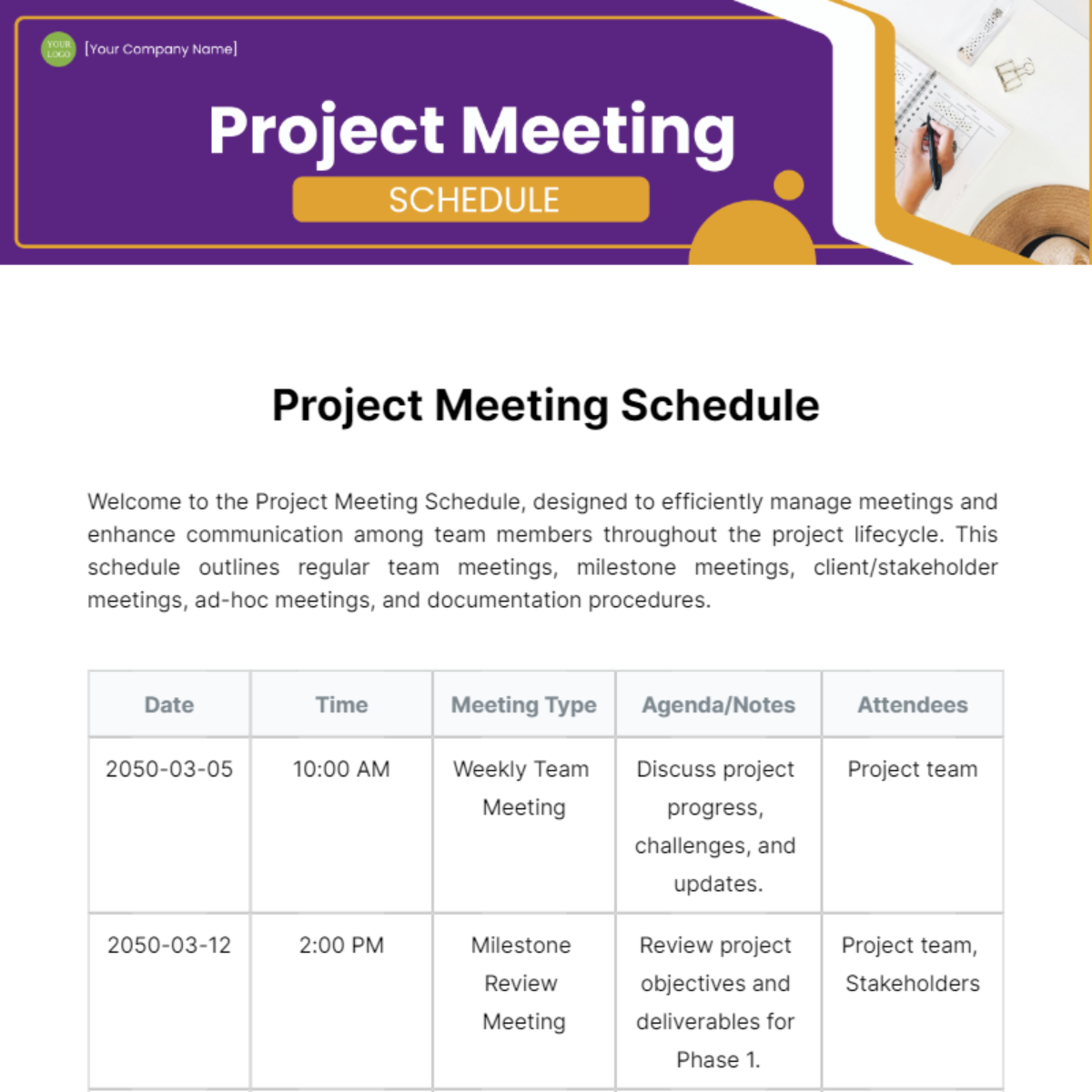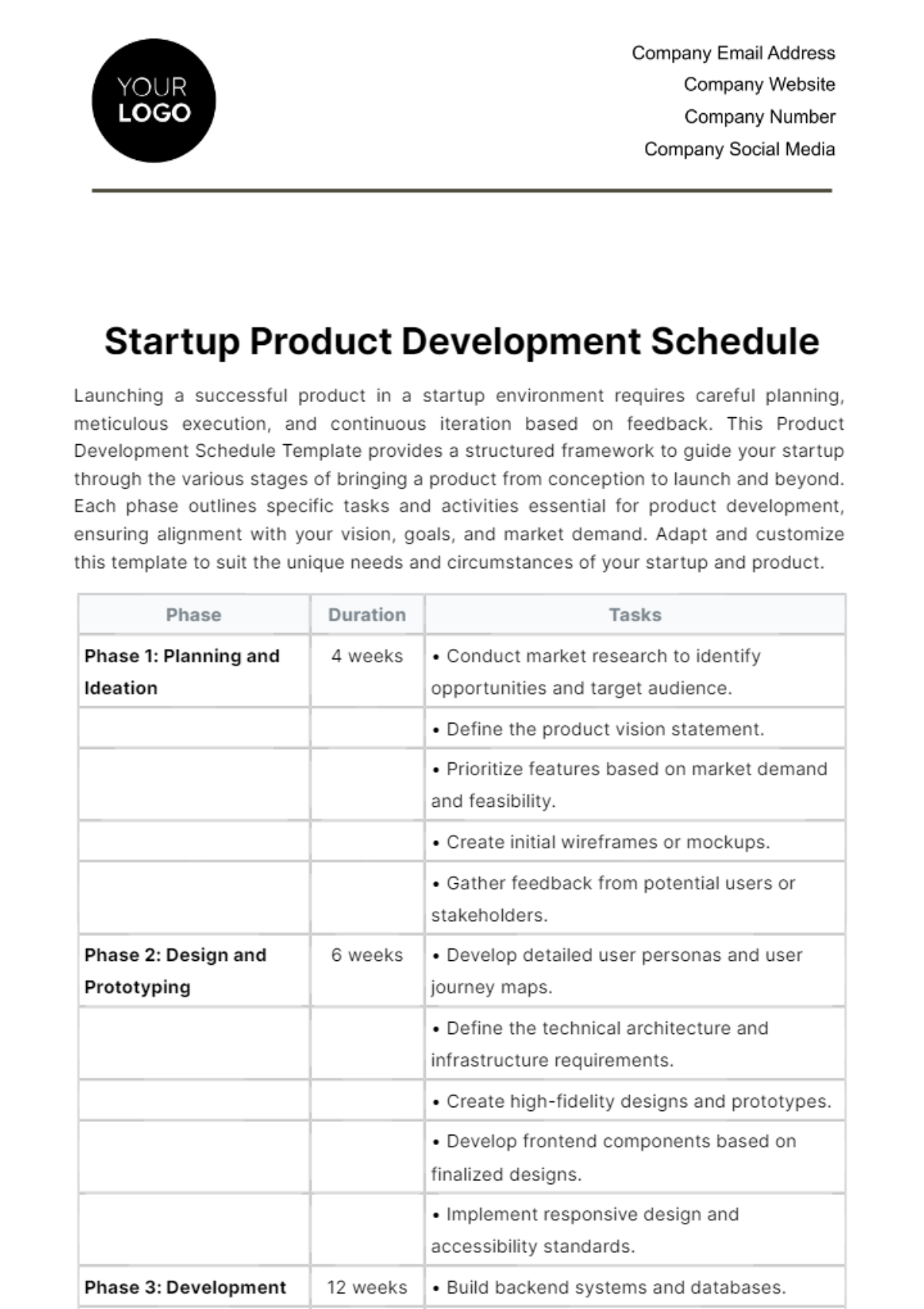Startup Product Development Schedule
Launching a successful product in a startup environment requires careful planning, meticulous execution, and continuous iteration based on feedback. This Product Development Schedule Template provides a structured framework to guide your startup through the various stages of bringing a product from conception to launch and beyond. Each phase outlines specific tasks and activities essential for product development, ensuring alignment with your vision, goals, and market demand. Adapt and customize this template to suit the unique needs and circumstances of your startup and product.
Phase | Duration | Tasks |
|---|---|---|
Phase 1: Planning and Ideation | 4 weeks | • Conduct market research to identify opportunities and target audience. |
• Define the product vision statement. | ||
• Prioritize features based on market demand and feasibility. | ||
• Create initial wireframes or mockups. | ||
• Gather feedback from potential users or stakeholders. | ||
Phase 2: Design and Prototyping | 6 weeks | • Develop detailed user personas and user journey maps. |
• Define the technical architecture and infrastructure requirements. | ||
• Create high-fidelity designs and prototypes. | ||
• Develop frontend components based on finalized designs. | ||
• Implement responsive design and accessibility standards. | ||
Phase 3: Development | 12 weeks | • Build backend systems and databases. |
• Integrate frontend and backend systems. | ||
• Conduct unit testing and integration testing. | ||
• Implement core product features according to the feature roadmap. | ||
• Provide ongoing customer support. | ||
Phase 4: Beta Testing and Feedback | 6 weeks | • Recruit beta testers from target audience. |
• Release beta version to testers. | ||
• Gather feedback and data on user experience and performance. | ||
• Finalize marketing materials and launch plan. | ||
• Prepare customer support resources. | ||
Phase 5: Launch and Post-Launch Support | Ongoing | • Launch the product to the public. |
• Monitor launch metrics and user feedback. | ||
• Monitor product performance and user feedback. | ||
• Conduct regular code reviews and iteration cycles. | ||
• Iterate on the product based on usage data and market trends. |



















